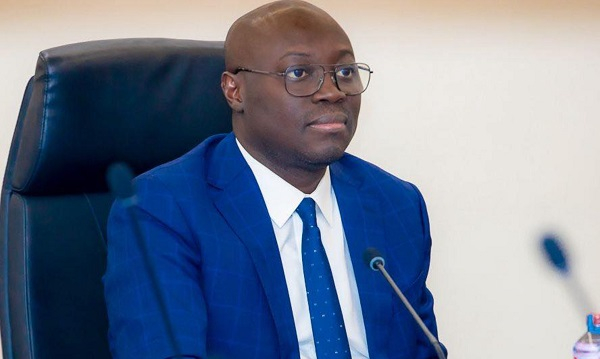International credit rating agency S&P Global Ratings has upgraded Ghana’s long- and short-term foreign and local currency sovereign credit ratings from ‘CCC+/C’ to ‘B-/B’, citing improved fiscal performance, rising foreign reserves, and a stronger external position.
The outlook on the rating is stable.
According to S&P, Ghana’s economy has seen a significant turnaround driven by higher gold and cocoa export volumes, favourable global prices, and policy reforms under the current administration.
These developments have strengthened the Ghanaian cedi and boosted the country’s gross foreign reserves to nearly US$11 billion, equivalent to 9% of projected 2025 GDP — up from US$6.8 billion at the end of 2024.
“The upgrade reflects Ghana’s gradually strengthening balance of payments and fiscal positions, which have been supported by resilient domestic growth and favourable terms of trade,” S&P said in its report.
The agency expects Ghana’s inflation to fall below 10% in 2026, following sharp declines throughout 2025, and noted that new fiscal rules and improved public financial management are helping to reinforce budget discipline.
Ghana completed the restructuring of US$13.1 billion in Eurobonds in October 2024, following its default in December 2022, and is now making progress on the remaining US$5 billion in official and commercial debt.
However, S&P cautioned that disputes with some creditors, including the African Export-Import Bank and the Eastern and Southern African Trade and Development Bank, could delay a full resolution.
Despite these challenges, the agency praised the government’s commitment to fiscal consolidation, debt sustainability, and transparency in ongoing negotiations.
Ghana’s economy is expected to grow by 6.0% in 2025, up from earlier projections of 4.5%, supported by robust activity in mining, agriculture, and services.
The Bank of Ghana’s Composite Index of Economic Activity rose by 6.1% year-on-year in July 2025, compared to 1.9% in the same period last year, signalling a broad-based recovery.
S&P highlighted government initiatives such as the Ghana Gold Board, which is formalising small-scale gold trading, and the restructuring of the Cocoa Board’s (Cocobod) financing arrangements, both of which are improving export performance and foreign inflows.
The ruling National Democratic Congress (NDC) government, which secured a parliamentary majority in the December 2024 elections, is pursuing an ambitious reform agenda anchored in its US$3 billion IMF Extended Credit Facility (ECF) programme, set to run until May 2026.
The government has introduced fiscal rules mandating a 1.5% primary surplus and a long-term debt ceiling of 45% of GDP by 2034.
Oversight measures now require parliamentary approval for procurement and tighter expenditure controls, helping to prevent fiscal slippages.
S&P expects Ghana’s fiscal deficit to average 3.8% of GDP between 2025 and 2028 — a marked improvement from the 10-year average of 7.3%.
Interest payments, while still high, are projected to decline from 44% to about 20% of revenue due to lower borrowing costs and debt restructuring.
The cedi has appreciated by nearly 35% against the US dollar in 2025, while inflation dropped to 8% in October, the lowest since 2021.
Treasury bill rates have also fallen sharply from almost 30% in 2024 to around 12% this year.
While the outlook is stable, S&P warned that the rating could face downward pressure if fiscal reforms stall, debt service costs rise, or commodity prices decline faster than expected.
Conversely, sustained fiscal discipline, further reserve accumulation, and improved access to financing could prompt another upgrade in the next 12–18 months.
“The stable outlook balances Ghana’s improving fiscal and external metrics against remaining vulnerabilities — including high debt service costs, exposure to commodity price shocks, and the need to maintain reform momentum,” S&P noted.
Key Figures:
Reserves: US$11 billion (9% of GDP), up from US$6.8 billion in 2024
Inflation: Expected below 10% in 2026
Growth: Forecast at 6.0% in 2025
Credit Rating: Upgraded to ‘B-/B’ with a stable outlook
Fiscal Target: 1.5% primary surplus; debt ceiling at 45% of GDP by 2034
S&P’s latest upgrade marks Ghana’s strongest external and fiscal performance since its 2022 default, signalling renewed investor confidence and a stabilising macroeconomic environment.
